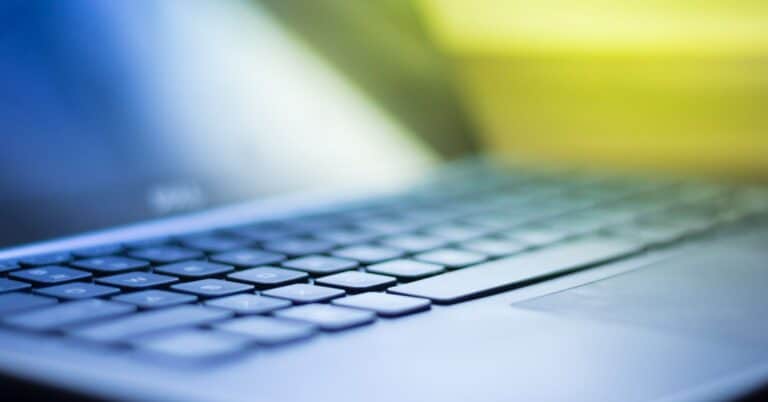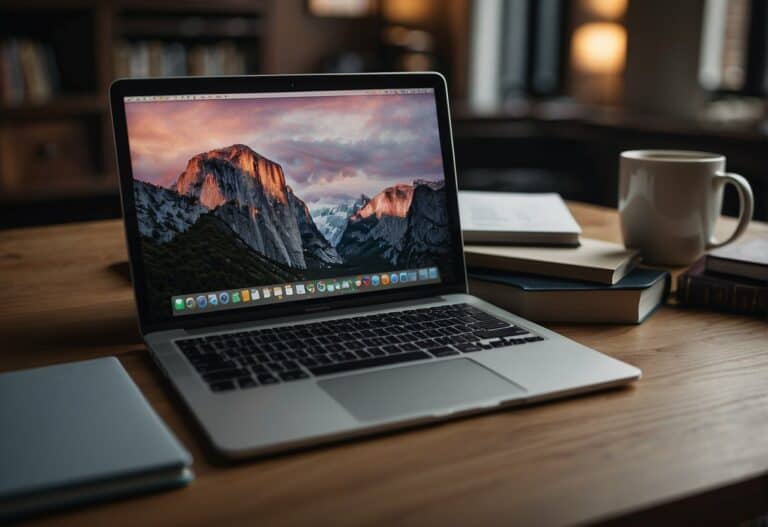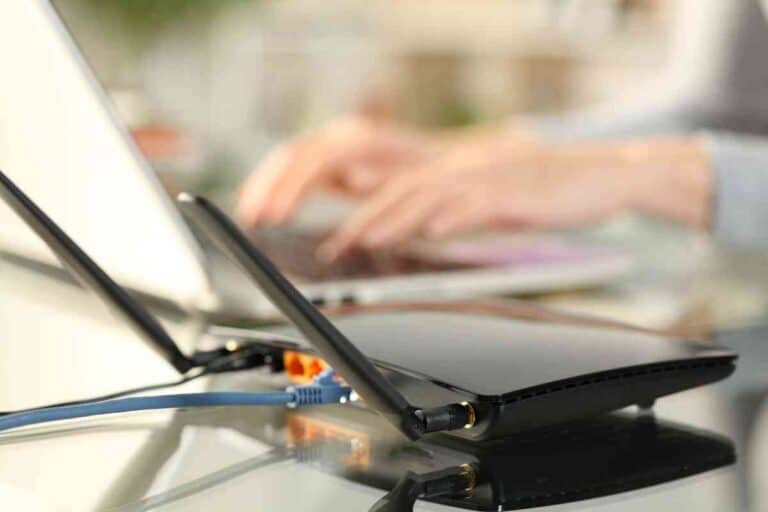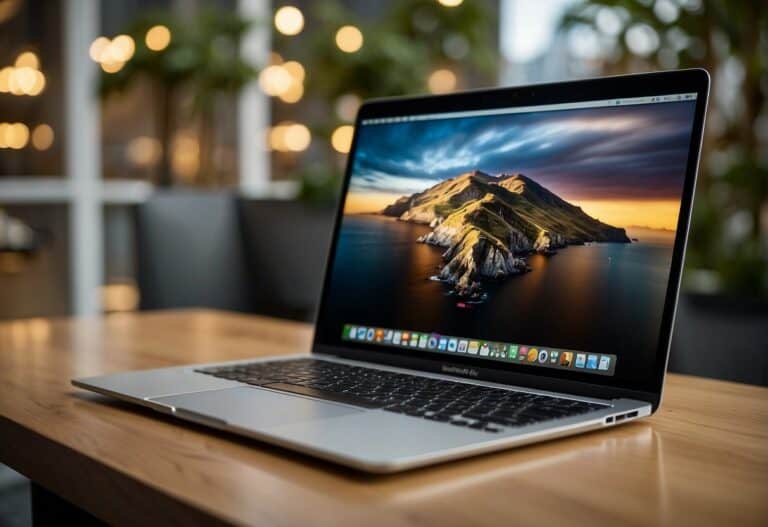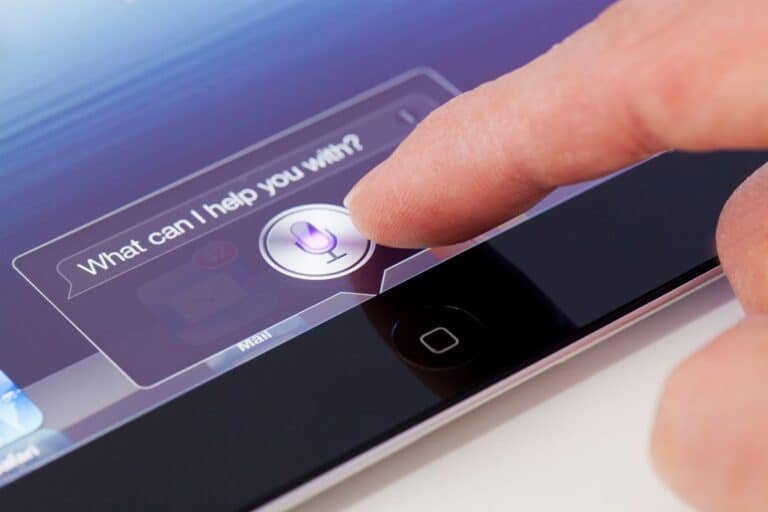Extending MacBook Air Battery Life
Understanding MacBook Air Battery Basics
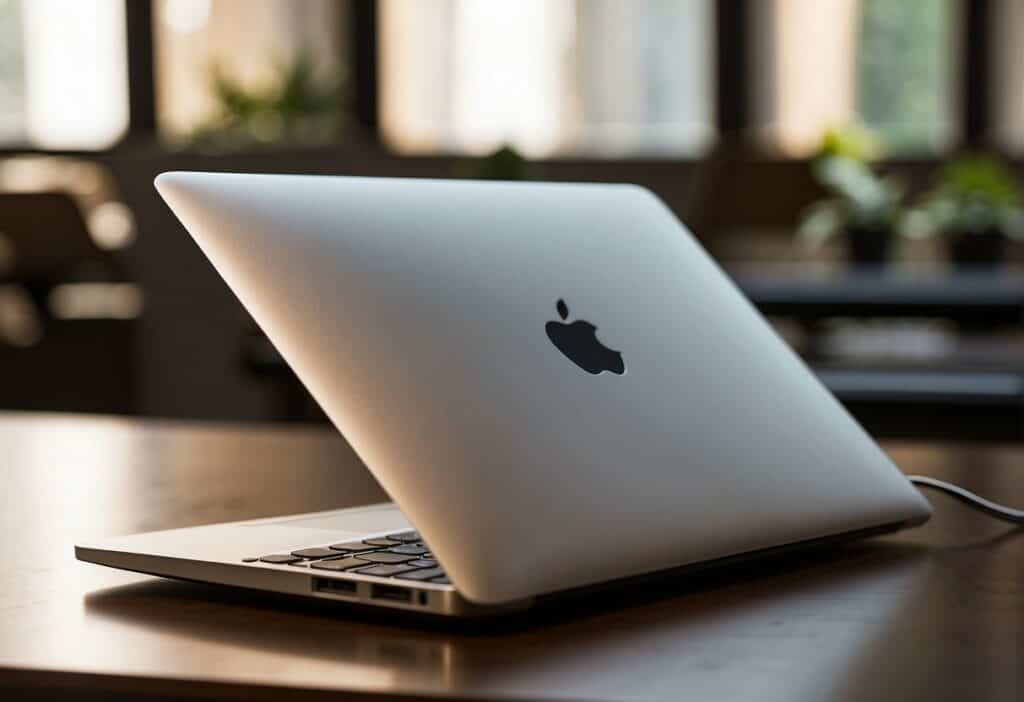
When we look at the MacBook Air, it’s clear Apple has designed the battery to blend longevity with efficiency, but the basics of battery care remain crucial to maximize its lifespan. Most MacBook Air models come with a built-in lithium-polymer battery, designed for a specific number of charge cycles. A charge cycle happens when you use 100% of the battery’s capacity, but not necessarily in one go.
For instance, you could use 50% one day, charge it overnight, and then use another 50% the next day. That’s one full charge cycle. Typically, a MacBook Air battery promises about 1,000 charge cycles before its performance may start to diminish.
Let’s look at a few fundamental parameters:
- Voltage: This indicates the health and charging capacity. Generally, a lower voltage is better for battery lifespan.
- Capacity: Represented in watt-hours (Wh), it denotes how much power your battery can hold.
Here’s a simple table showing the expected lifespan of a MacBook Air battery:
| Battery Condition | Details |
|---|---|
| Normal | Full performance, battery is in good health |
| Replace soon | Performance could degrade, health getting weaker |
| Replace now | Performance significantly reduced |
| Service battery | Malfunctioning, immediate attention required |
During my time with various MacBook Air models, I’ve noticed that setting a device in a “Long Life” mode by keeping the charge level around 80% can indeed help maintain battery efficacy.
Regular maintenance and calibrations are vital. We should check the health information periodically, as MacBook Air provides an easy way to notice any alarming changes through the system preferences. Keeping the MacBook’s battery healthy not only ensures it lasts longer but also sustains its resale value.
Optimizing System Settings
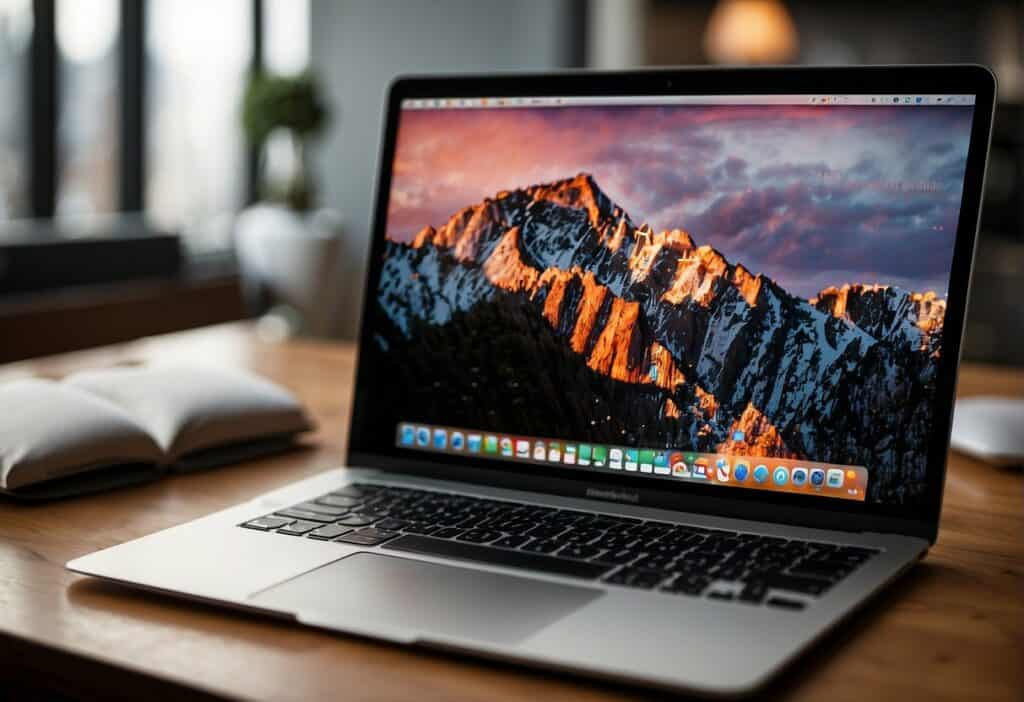
Tweaking your MacBook Air’s system settings is a simple yet effective way to squeeze more life out of your battery. From adjusting display brightness to managing how your MacBook conserves energy, these settings are your first line of defense against unnecessary power drain.
Adjusting Display Brightness
Manual Adjustment:
- To reduce power consumption, lower screen brightness by pressing the F1 key (decrease brightness) to a comfortable level that doesn’t strain your eyes.
- Brightness can also be adjusted from the Control Center by dragging the Brightness slider.
Auto-Brightness:
- Activating Auto-Brightness can conserve energy by automatically adjusting the screen brightness based on ambient light levels.
We’ve found that dimming our screen to just below what we might prefer during day use can actually extend our battery life significantly, without compromising our experience too much.
Managing Energy Saver Preferences
Energy Settings Table
| Setting | Option | Effect on Battery Life |
|---|---|---|
| Turn Display Off | After 2 minutes of inactivity | Greatly extends battery by reducing idle power usage |
| Enable Power Nap | Checked/Unchecked | Affects battery depending on whether you prefer periodic updates |
| Slightly dim display | Checked when on battery power | Reduces energy usage when running on battery |
We set our display to turn off after just a couple of minutes of inactivity. It may seem like a hassle, but the difference it makes is remarkable!
Regulating Keyboard and Illumination
Reduce Keyboard Backlight:
- Decrease keyboard brightness with the F5 key or turn it off entirely to save energy.
- Keyboard backlight can be turned off automatically after a period of inactivity in the system settings.
Adjusting Illumination Settings:
- Find the “Adjust keyboard brightness in low light” setting and uncheck it to maintain consistent backlighting, or adjust to personal preference.
Our keyboards are like our campfires—cozy, but not always needed. We’ve gotten used to turning off the keyboard backlight during the day which has had the added bonus of making us feel quite power-efficient!
Maintaining Battery Health
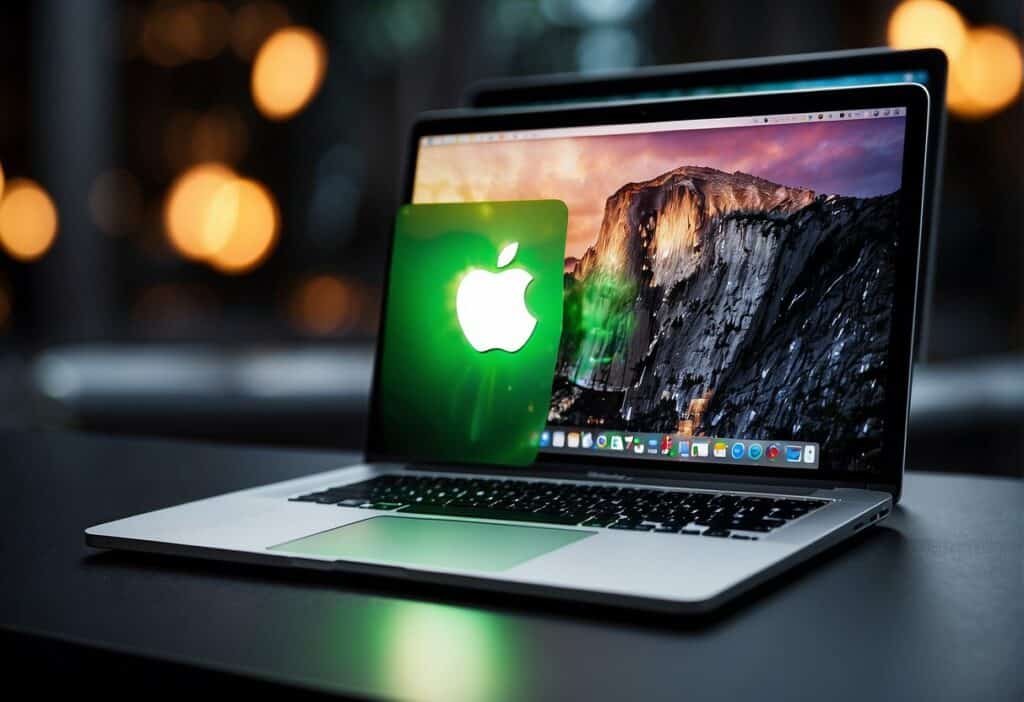
To ensure our MacBook Air’s battery remains in peak condition, we focus on two key practices: regular calibration and optimal charging.
Regular Calibration
Calibrate the battery every few months to ensure accurate battery health readings. This means letting the battery drain completely before giving it a full charge. This is something I used to overlook, but since I’ve started doing it, I’ve noticed a more accurate battery percentage display.
Optimal Charging Practices
We should keep the battery charged to 80% for everyday use and only charge to 100% when necessary. It’s beneficial to avoid letting the battery drop below 20% before plugging in. I found that by setting my MacBook to stop charging at 80%, my battery’s lifespan has noticeably improved.
| Charge Level for Daily Use | Suggested Minimum Charge before Recharging |
|---|---|
| 80% | 20% |
By sticking to these specific figures, we can help maintain our MacBook Air’s battery health for a longer period.
Utilizing Software Efficiently
When we think about saving battery on our MacBook Air, we often overlook the immense impact software efficiency can have. Managing our apps and keeping our system updated are foundational to extending battery life.
Closing Unused Applications
We’ve all been there, accidentally leaving a myriad of applications open after a long day. But did you know that closing unused applications is a straightforward step to improve battery efficiency? Every open app consumes power, even if just idling in the background.
To keep tabs on what’s running, we can use the Activity Monitor for a bird’s-eye view of all active processes. Here’s a quick guide:
| Action | Instructions |
|---|---|
| Open Activity Monitor | Press Command+Space and type “Activity Monitor” |
| Close Applications | Select unnecessary apps, click ‘X’ in the upper left corner |
By streamlining our workflow to only the essentials, we ensure maximum software efficiency and battery conservation.
Updating Software Regularly
Remember when we kept clicking ‘Remind Me Tomorrow’ on software updates? Guilty as charged. Yet, regularly updating macOS and installed applications isn’t just about new features. It’s also about efficiency. Developers often release updates that optimize software to use less battery.
Pro tip: Enable automatic updates to make this process hassle-free.
| Steps to Enable Automatic Updates | Action Needed |
|---|---|
| Open System Preferences | Click on ‘Software Update’ |
| Customize Settings | Choose ‘Automatically keep my Mac up to date’ |
By staying current, we’re not only securing our system but also ensuring we’re running the most battery-friendly versions of our software.
Handling External Devices and Accessories
When we aim to extend the battery life of our MacBook Air, being mindful of how we handle external devices and accessories is vital. Every additional piece of hardware that we connect to our MacBook uses power, some more than others. Here’s how we can manage them more effectively:
- USB Devices: Non-essential peripherals like external hard drives, USB fans, or iPhone charging can draw significant power. We should disconnect these when not in use.
- Bluetooth Accessories: Bluetooth devices such as mice, keyboards, and headsets consume battery life even when idle. Turn off Bluetooth when these aren’t necessary.
- External Displays: Utilize the MacBook’s built-in screen if possible, as powering external monitors can swiftly deplete battery reserves.
Here’s a simple table that outlines the estimated power consumption of common accessories:
| Accessory Type | Estimated Power Usage |
|---|---|
| USB Hard Drive | High |
| iPhone Charger | Moderate |
| Bluetooth Mouse | Low |
| USB Fan | Low |
Our personal experience has shown the impact. While writing an extensive review on USB accessories last year, we noticed our MacBook Air’s battery drained almost twice as fast when multiple devices were connected. It was a clear indicator that efficient handling of these gadgets can lead to better battery longevity.
Remember, being proactive by disconnecting and managing the use of our external devices can make a considerable difference. This small change in our daily habits can help us get the most out of our MacBook’s battery life.
Monitoring and Analyzing Battery Usage
To get the most out of our MacBook Air’s battery, it’s crucial to keep tabs on how applications and system processes impact our energy use. By monitoring and interrogating the data, we can make informed decisions to optimize battery life.
Using Activity Monitor
The Activity Monitor on macOS is a powerful tool for tracking down energy-hungry applications. To open it, we simply go to Applications > Utilities > Activity Monitor, then click on the Energy tab.
This panel shows us a list of apps and processes, along with their energy impact over the last 12 hours or since the last charge. We look for apps with consistently high energy impact and consider closing them when not in use.
- Energy Impact: This column shows the current energy usage of each app.
- 12 hr Power: Offers a look at the app’s energy impact over the past 12 hours.
A personal insight: I once noticed significant battery drain while my MacBook Air was idle. After opening Activity Monitor, I realized a background app I rarely used was consuming an inordinate amount of power.
Interpreting Battery Condition
Our MacBook Air’s System Preferences is a starting point to check the overall condition of the battery.
Under System Preferences > Battery > Battery Health, we can view the battery’s maximum capacity relative to when it was new, and its overall condition rating.
The condition rating might say “Normal,” “Replace Soon,” “Replace Now,” or “Service Battery.” Apple recommends that we aim to keep the battery’s state of charge at about 80 percent to prolong its life.
Here’s a quick reference to interpret the battery condition ratings:
- Normal: The battery is functioning normally.
- Replace Soon: Battery is holding less charge, consider replacing it soon.
- Replace Now: The battery’s capacity has significantly decreased.
- Service Battery: The battery is malfunctioning, and we should have it serviced.
By staying vigilant with Activity Monitor and informed about the battery’s health, we can ensure that our MacBook Air stays powered longer and remains a reliable tool in our technological arsenal.
Avoiding Extreme Temperatures
Exposing our MacBook Air to extreme temperatures can significantly affect its battery life. Apple recommends that the ideal operating temperature for a MacBook Air is between 50 to 95 degrees Fahrenheit (10 to 35 degrees Celsius). That’s the sweet spot where our battery is happiest.
When using our MacBook Air in conditions outside this range, it’s crucial to bring it back to a more moderate temperature as soon as possible. Here are some practical tips to avoid temperature extremes:
In hot environments:
- Avoid leaving it in a parked car where temperatures can skyrocket.
- Keep it out of direct sunlight for prolonged periods.
In cold environments:
- Don’t use it in freezing conditions.
- If it does get cold, allow it to warm up to room temperature before using it.
MacBooks, like any electronics, are sensitive to temperature changes and we’ve seen it firsthand. I once left my MacBook Air in the car during a hot summer day and noticed significantly slower performance until it cooled down.
| Temperature | Impact on MacBook Air |
|---|---|
| Above 95°F | Potential for battery damage |
| Below 50°F | Decreased battery performance |
Keeping our MacBook Air within these recommended temperature ranges ensures that the battery not only performs optimally but also helps extend its overall lifespan. Making these small adjustments to our usage habits can make a big difference in the long run.
More Macbook Air Articles: (Read These Next)
- Best MacBook Air Models
- MacBook Air Buying Guide
- Setting Up Your New MacBook Air
- MacBook Air Storage Options
- MacBook Air for Students
- MacBook Air vs MacBook Pro
- Enhancing MacBook Air Performance
- Top MacBook Air Accessories
- Solving Common MacBook Air Problems
- MacBook Air for Writers
- Latest macOS Features for MacBook Air
- MacBook Air for Remote Work
- Buying a Refurbished MacBook Air
- MacBook Air Keyboard Shortcuts
- MacBook Air for Travel
- Securing Your MacBook Air
- MacBook Air and the Apple Ecosystem
- MacBook Air Screen Features
- Personalizing Your MacBook Air
- MacBook Air for Content Creation
- Transitioning to MacBook Air from PC
- MacBook Air for College
- Light Gaming on MacBook Air
- Extending MacBook Air Battery Life
- MacBook Air Connectivity and Ports
- Using MacBook Air in Small Businesses
- Reviewing the MacBook Air with M1 Chip
- MacBook Air vs Windows Ultrabooks
- Sustainable Use of MacBook Air
- Anticipating Future MacBook Air Developments

